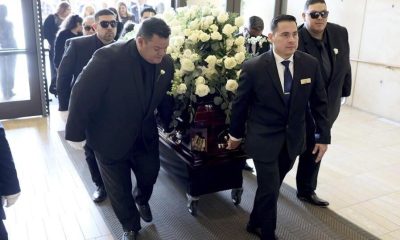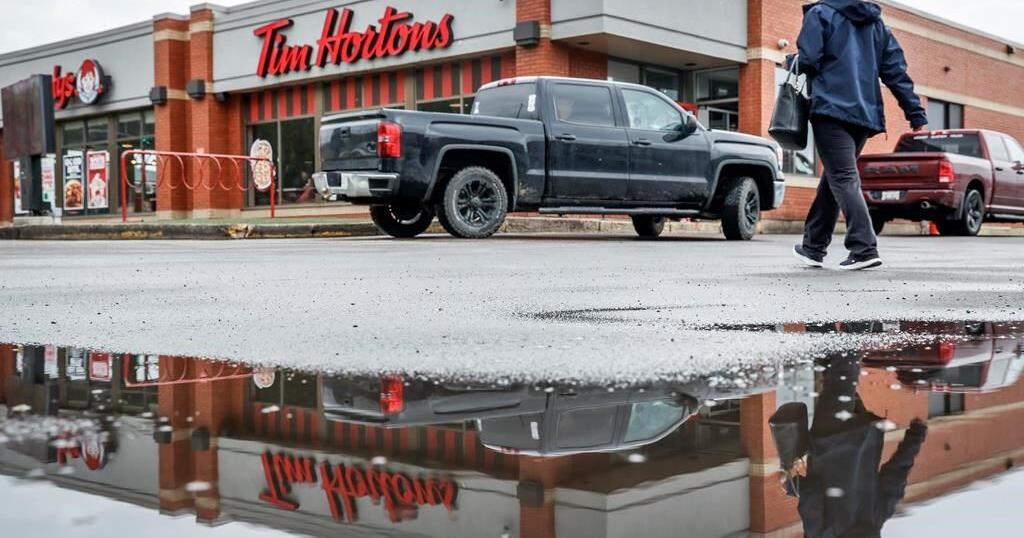- With the coronavirus outbreak, Amazon has had to balance a huge surge in online demand with the safety of its workers who pack people’s orders.
- Warehouse insiders said the company had gotten rid of security checks, would allow phones on the warehouse floor, and was spacing out chairs in break rooms.
- But they also said Amazon’s distancing rules were hard to follow. “We work in stations where we are within 2 feet of each other most of the time,” one worker said.
- Business Insider spoke with four US Amazon workers to find out what life is like inside.
- Visit Business Insider’s homepage for more stories.
Amazon has had to walk a difficult tightrope as the coronavirus spreads globally.
One the one hand, a pandemic has been great for business. Demand is spiking as people choose to stay at home and order in food and other supplies.
On the other, a pandemic may affect its warehouse staff members, thousands of whom often work shoulder to shoulder to pack people’s orders quickly. Amazon must keep those workers safe, even as it encourages them to work harder.
The company has seen an uptick in cases at its facilities. It closed a delivery station in Queens, New York, after confirming a coronavirus case, its first at a US facility. It has reported at least five cases in three warehouses (known internally as fulfillment centers, or FCs) across Italy and Spain but has so far refused to close any of them.
Business Insider spoke with four US Amazon workers to see how life has changed.
Amazon has had to relax its security and encouraged distancing — but it isn’t always working
Social distancing means Amazon has had to relax some of its security processes.
“They are no longer using the metal detectors at the front to screen people coming out of the FC for theft, but they also created a policy of no jackets/heavy coats or non-clear bags,” a warehouse worker in Michigan told Business Insider.
They added that typically strict rules about no food at workstations had been relaxed, though workers still aren’t allowed to eat at their stations.
Another big change is that workers are now allowed to bring their phones onto the warehouse floor — which had been strictly prohibited — in case they need to be in touch with their families or childcare providers for emergencies. This isn’t always helpful however, as one employee said they don’t get any signal at their workstation.
Signs have gone up in some warehouses telling employees to remain 3 feet away from one another at all times. Amazon has started staggering break and shift times to alleviate crowding — but even so, it seems the 3-feet rule is proving difficult to enforce.
“We work in stations where we are within 2 feet of each other most of the time,” one person who works in an Amazon returns center said. “And walking to and from breaks, you’re shoulder to shoulder.”
A warehouse worker also said the company had spread them out, but had also installed motion-sensor enabled fans. “We have spread out at stations but they installed fans that are motion-sensored and the long lines of 30 or so people are all in a long row. Guaranteed the fan is blowing whatever germs down the entire line,” they said.
Amazon has also removed some chairs from canteens and break rooms to further space out workers.
“They have separated each table in the break rooms and only left about two chairs at each table, which is causing some people to go to other break rooms or even stand,” the returns-center worker said.
Amazon says workers can take unlimited time off, but it’s also incentivizing people to keep working
As the coronavirus outbreak reached the US, Amazon made an extraordinary concession: It told workers they could take unlimited unpaid time off.
Ordinarily, workers have a set amount of unpaid time off, and if they use it up and go into what’s referred to as “negative UPT,” it’s grounds for instant dismissal. The thinking behind the unlimited UPT was that it would encourage workers who suspect they may have COVID-19, the illness caused by the coronavirus, to stay home.
Simultaneously, demand for Amazon shipping has skyrocketed, causing a huge strain on the staff members who remain in the warehouse.
Amazon temporarily upped its hourly wages by $2 to incentivize workers and is on an enormous hiring spree, seeking 100,000 extra workers in the US alone.
Sarah Jacobs
Two US workers said that until Amazon introduced the $2 salary bump, workers had been taking advantage of the unlimited unpaid time off. Normally, UPT can be taken only in one-hour increments, so if a worker is late by a few minutes, that’s a whole hour of UPT gone.
“Associates are leaving early and coming in late, so the $2 raise is to encourage people who aren’t sick to actually come to work and ensure we can meet the customer needs,” one worker said.
The worker said their warehouse’s average headcount was just 53% of the usual count per day.
“It’s causing an insane strain on the workers who do show up, shift after shift, creating numerous days of mandatory overtime to keep up with the demand,” they said. “Hiring, at this point, is the only way to keep ourselves from overworking the associates.”
A warehouse worker in Kansas City said that while the increased pay was good, they still thought the level of risk was “insanely high.” Another worker in Nashville said that for many workers, unpaid time off is not financially an option.
“If we get sick, we got two choices: stay home without pay, or come in sick,” they said. “I saw quite a few coworkers looking like hell and coughing. I’m freaked out to go back to work tonight, but what choice do I have? None.
“I’ve never felt less cared about by an employer until now,” they added.
Some warehouses are cleaner than others
Amazon, like many workplaces, has said it’s ramping up sanitation in its warehouses, getting in extra cleaning shifts and handing out hand sanitizer, wipes, and antibacterial spray to staff.
In some warehouses, that’s been noticeable. “We have plenty of sanitizing wipes — a container at each station,” the returns-center employee said. “I’ve seen someone walking around sanitizing the water coolers and other commonly used items. It seems that housekeeping is also cleaning restrooms more frequently.”
The Michigan worker added: “Every desktop, every surface is sanitized at a rate of almost three times that it was prior to the pandemic. There are hand-sanitizer stations in numerous places all over the FC.”
Ben Gilbert/Business Insider
In other warehouses, however, the sanitation-equipment supply seems less plentiful. The Nashville worker said that “a couple extra bottles of hand sanitizers in the break room is about the extent of it.”
Earlier this week, a worker inside a warehouse in Italy where two employees were diagnosed with the virus told Business Insider that the spray bottles and hand gel often ran out.
One worker also said that some of the spray bottles in the break rooms had since vanished, possibly stolen. “I’m unsure if they’ve been removed for that reason, or if we ran out of that,” they said.
Some workers say morale is low
While work inside the warehouses has become more grueling, Amazon has been driving home to its workers that society is relying on the company to keep going and to maintain its mantra of “customer obsession.”
“Without us, there would be even more brick-and-mortar shopping, shortages, and difficulties helping social distancing,” one worker said. “If Amazon shuts down, society will be in a terrifying brink of collapse.”
Nonetheless, the worker said, morale inside their warehouse is low. “Almost every day there is a new report of someone in the building testing positive, none confirmed though,” they said.
Amazon said new proactive measures would include social distancing, increased cleaning, and deep-cleaning where necessary. The company said it would pay workers who are diagnosed with COVID-19 or quarantined for two weeks.
A spokesman said on Thursday: “Since the early days of this situation, we have worked closely with local authorities to proactively respond, ensuring we continue to serve customers while taking care of our associates and we’re following all guidelines from local officials about the operations of our buildings.
“We have implemented proactive measures to protect employees including increased cleaning at all facilities, maintaining social distance, and adding distance between drivers and customers when making deliveries.”
The company did not immediately respond to Business Insider’s request for further comment.
Amazon announced earlier this week that it would suspend all nonessential item shipments to its warehouses to make sure it can continue delivering household goods.



































